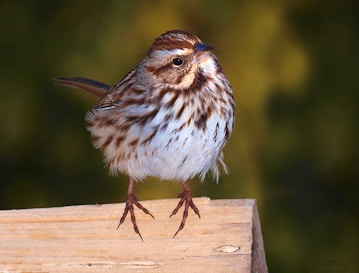How Natural Should Laboratory Behavior Be?
In a pointed review in Neuron in February 2017, neuroscientist John Krakauer of Johns Hopkins University asked whether the laboratory behaviors neuroscientists typically study are so unnatural as to be nearly useless for understanding the brain. At a moment when neuroscientists are infatuated with new techniques for measuring and manipulating neural activity, he argues, behavior has become an afterthought. This oversight could lead the entire field astray, he says.

Researchers have generally opted for simple behaviors because performing neural recordings in awake, behaving animals is difficult. This dilemma pits naturalistic behavior against technological feasibility. “We want to measure neural activity with as much precision as we can, but we want to have a behavioral setup that’s as realistic as possible,” says Anne Churchland, a neuroscientist at Cold Spring Harbor Laboratory and an investigator with the Simons Collaboration on the Global Brain. “That’s the tension that everybody is facing.”
Churchland, who studies how rodents integrate sensory and motor information, applauds efforts to incorporate more natural behavior in the lab. But, she says, it’s important for researchers to think critically about what constitutes natural behavior. “We have to think about what does it really mean to bring the ethological approach to the lab,” she says. “What are the consequences of doing it halfway?” Churchland and co-authors Ashley Juavinett and Jeffrey Erlich explore this question in a new review in Current Opinion in Neurobiology, whose forthcoming issue focuses on the neurobiology of behavior.

Let’s say a researcher tries to create a more naturalistic auditory experiment with birds by using recorded birdcalls instead of pure tones. “Is that really ethologically valid?” Churchland asks. “Imagine that you’re alone in the room, and you hear some tones. ‘Well, OK, that’s something,’ you might think. But imagine you’re alone in a room and you don’t know what’s going on and all of a sudden you hear some kind of random human voices talking about something that’s not related at all to the context that you’re in. Well, it might be sort of spooky! My point is that we might sort of trick ourselves into thinking if we add a few pieces of an ethological environment we’ve re-created a natural scenario, but in fact we really haven’t.”
Churchland offers a path forward by laying out a “three-dimensional conception of behavior” for researchers to consider. On one axis is what she calls the “ethological validity” (in other words, how natural the behavior is), on a second axis is the task complexity, and on the third is the “stimulus-response compatibility,” or how similar the laboratory-trained response is to the animal’s natural response. Scientists can use this framework to decide what trade-offs they need to make to answer their particular research question.
Training an animal to orient itself toward a startling noise, for example, mimics a natural behavior. The stimulus-response compatibility for this task is high — the response in the lab aligns with the typical response in the wild, so the behavior would be suitable for studying how neural circuits operate naturally. But if the researcher is studying executive control — the ability of one brain region to override the activity of another — then training the animal to orient itself away from the startling noise might be preferable, even though this behavior has low stimulus-response compatibility and low ethological validity. That is, it isn’t very natural.
Churchland’s framework isn’t meant to be definitive; instead, it’s intended to spur researchers to think critically about laboratory behavior with the understanding that trade-offs are a necessary evil. The innovation Churchland and colleagues have developed “is providing a specific framework to assess the strengths and weaknesses of particular behaviors,” says Tim Hanks, a neuroscientist at the University of California, Davis. “They recognize that there’s no single answer for the best type of behavior. Instead, there are inherent trade-offs along multiple distinct dimensions.”


